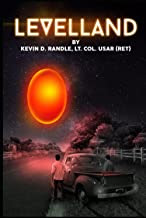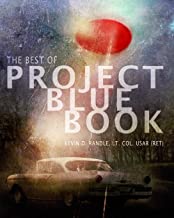Since
I posted the article that suggested that Bessie Brazel’s testimony might be in
error and that it was contradicted by that given by so many others, we have
been all over the board. Nearly everyone was selecting that data which tended
to support their position and ignore everything else. So, I thought I would
take some of those points and provide the data available about them. I realize
that some of you are so far to one side or the other that any sort of
compromise is impossible, but for those who are interested in all the
information, I will try to publish a series of articles that look at some
aspect of this case.
First,
I’ll tackle the size of the debris field because it seems to range from a
square mile down to an area about 200 feet in diameter. That’s quite a big
difference, and I know that we’ll never reach a consensus, but heck; we might
have a little fun and learn something by accident.
The
testimonies given after 1978 which is when Jesse Marcel, Sr. was identified as
having recovered pieces of a flying saucer provide some of the data. Marcel
himself told Bill Moore (The Roswell
Incident, p. 63) that it was “about three quarters of a mile long and a
couple of hundred feet wide.”
Stan
Friedman, in his book, Crash at Corona
(p.10) wrote of Marcel’s description, “The area covered with wreckage was
roughly three quarters of a mile long and several hundred yards wide.”
Moore
also quotes Walt Whitmore, Jr. as giving a description. Whitmore hadn’t seen
the field before the Army cleaned it up, according to his testimony at that
time. Moore wrote (p. 89), “Several days later Whitmore, Jr., ventured out to
the site and found a stretch of about 175 – 200 yards of pastureland uprooted
in a sort of fan-like pattern with most of the damage at the narrowest part of
the fan.”
Whitmore
told Karl Pflock (p. 154), “The debris covered a fan- or roughly
triangle-shaped area, which was about 10 or 12 feet wide at what I thought was
the top end. From there it extended about 100 to 150 feet, widening out to
about 150 feet at the base. This area was covered with many, many bits of
material.”
Bill
Brazel, who hadn’t seen the debris in the field except for the small pieces he
said he had found, also talked of a gouge that ran through the pasture. He said
that it was narrow at one end spread out toward the center and then narrowed
again. Although he didn’t give us a length of the gouge, he eventually took us
to what he thought of as the top of the gouge. Later, during the CUFOS
archaeological dig there, we measured down from that point, about three
quarters of a mile, placing little flags along the way.
 |
| Flags placed to show the gouge during the CUFOS archaeological dig in the early 1990s. |
Bud
Payne, who was a judge in New Mexico, said that he had been out to the debris
field but had been turned back by the military cordon. He did get close to it
and this would be irrelevant, except he took me out to the location he thought
was the debris field. When he stopped his vehicle and we got out, I nearly
stepped on one of those little flags we had placed there. We have attempted to
gather them all but had missed the last one. Payne took me to the same three
quarter of a mile stretch of New Mexico desert and through this provided, to a
degree, the size of the field.
And,
of course, there is the testimony in the affidavit signed by Bessie Brazel. She
said, “There was a lot of debris scattered sparsely over an area that seems to
me now to have about the size of a football field [or about an acre].”
The
most widely quoted size of the field is that given by Marcel. It can be found
in a number of books but as noted here, it is traceable to that interview
supplied to Bill Moore.
We
are told, of course, that these memories are decades old and might be
unreliable. Studies of memory and how it works suggest that confabulation (as
opposed to lying) can often fill in gaps in memory, that each time a memory is
accessed it is subject to alteration, and sometimes the memories simply no
longer exist, yet the witness (I can think of no other word that fits here
because they were involved in 1947) as he or she concentrates begins to put
together a story that seems plausible.
We
do have quite a few newspaper stories that were written in 1947, literally
within hours of some of the men walking the fields, so that their memories
should be clear and accurate. I say this knowing full well that some of the information
given to the reporters was less than accurate and some of it that was published
had been misunderstood.
The
Roswell Daily Record, for example,
reported, “The rubber [from the debris] was smoky gray in color and scattered
over an area about 200 yards in diameter.”
The
Fort Worth Star-Telegram, in a later
edition of their “Disc-overy Near Roswell Identified as Weather Balloon by
FWAAF Officer,” reported, “Brazell [sic], whose ranch is 30 miles from the
nearest telephone and has no radio, knew nothing about flying discs when he
found the broken remains of the weather device scattered over a square mile of
his land.”
The
Albuquerque Tribune, in a story
attributed to Jason Kellahin on July 9 reported, “Scattered with the materials
over an area about 200 yards across were pieces of gray rubber.”
What
does this tell us about the size of the debris field? Not much, actually. Those
who wish to believe it was small, have several sources they can quote. Cavitt,
in his interview with Colonel Richard Weaver didn’t provide a very vivid
account of the size. He said that it was about twenty feet, but the statements
were somewhat confusing. He might have been describing what he suspected was
the size of the object or he might have been describing the distribution of the
debris. He told Weaver, “Some here, some here, some here. No concentration of
it. No marks on the ground, dug up, anything hidden or anything like that, just
out on the territory around the bottom of New Mexico…”
I
don’t believe Whitmore’s testimony on this is reliable but suspect there was
some collusion between Max Littell of the Roswell museum and Whitmore to come
up with some debris, no matter what it was. They talked about creating a
display in Roswell, but I don’t believe that Littell had thought that through.
If Whitmore’s debris were pieces of a balloon, as he suggested to Pflock, then
the mystique of the Roswell case eroded at that point and not many people would
drive out of the way to look at a museum dedicated to a weather balloon.
Whitmore
had told Moore that the site had been cleaned before he got there but contradicted
that when he told Pflock that he saw the debris and even claimed to have some
of it. The debris had been locked in his safe deposit box, but when the box
grew too full, he moved the debris to his “junk room.” Although searches were
made, nothing was ever found. It was just one more bit of debris that vanished.
There
is Jesse Marcel’s testimony about the size of the field which he gave after
1978, but there is one story that provides some corroboration which was
published in 1947. In Linda Corley’s book, Marcel said, “It was about a mile
long and several hundred feet wide of debris.”
Brazel,
according to one newspaper account agreed with that size, saying it was
scattered over a square mile of the land. This was in a story other than the
one written by J. Bond Johnson.
Returning
to the Roswell Daily Record, Brazel,
it seems, was saying that the debris field was about 200 yards in diameter and
the Albuquerque Tribune changed the
wording to 200 yards across which is not quite the same thing but is close. The
by-line on the Albuquerque Tribune
story, as noted, was by Kellahin, so he was apparently working from his notes
made in Roswell.
All
this means is that if you are a skeptic, you have some evidence that the size
of the debris field was relatively small. If you are a believer, you have some
evidence that the debris field is relatively large. You have the majority of
the testimonies suggesting a large field from the record after 1978 but Bessie
Brazel suggests it was about 100 yards by 50 yards, or about the size of a
football field.
Or,
in other words, this is a wash. Whatever side you come down on, there is
testimony to support it. Not exactly a profound finding but just an observation
that suggests there are facts for everyone to cherry pick.





























